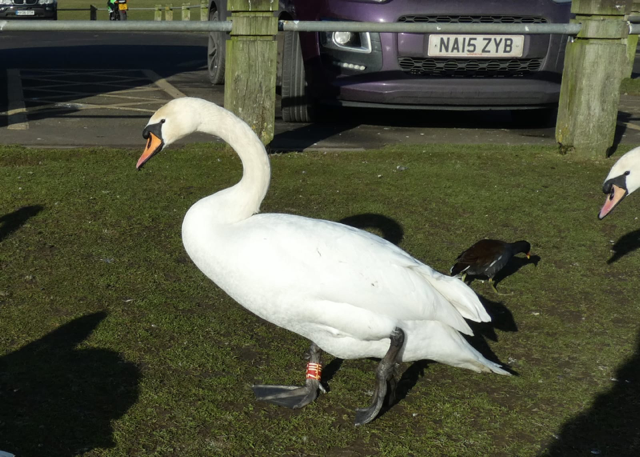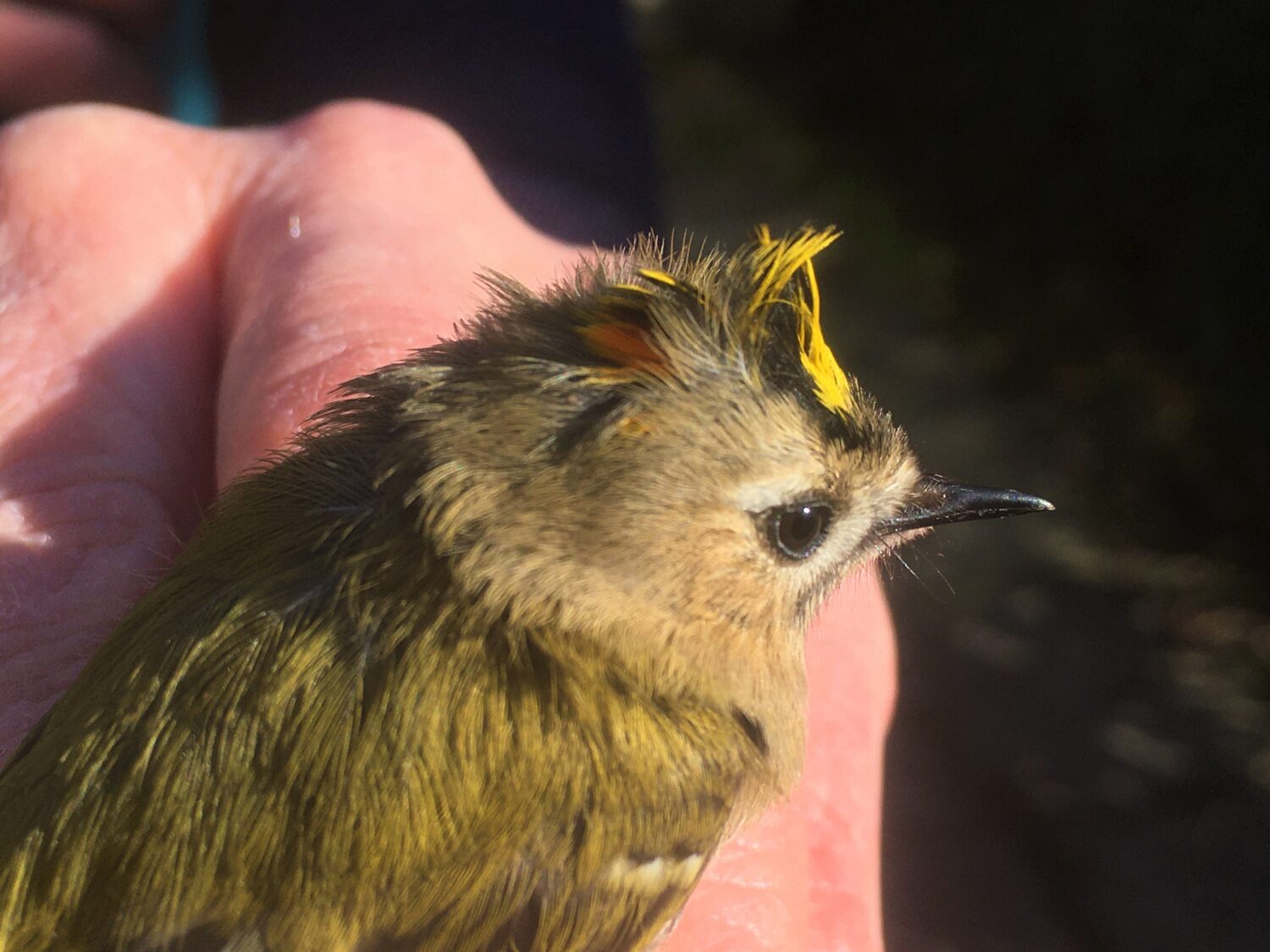North East ornithologist, Phil Hanmer, shares a new update summarising bird ringing across Northumberland throughout February.
Returns from the sightings or re-capture of ringed birds (Controls) are always interesting, particularly when it’s of a well-travelled Mute Swan. Mute swans are of course easy to spot and when fitted with coloured Darvic Rings easily read by birders so that individuals can be identified. Swan ZJU was originally ringed as part of a brood of seven cygnets at Howick on 8 September 2017 then next seen at Amble on 30 April 2018; next at Woodhorn, near Ashington, in October and November 2018. On 23 January 2020, it was at Jarrow, on the Tyne and currently they are residing at East Herrington, near Sunderland. Meanwhile, the father of this swan (ZJP) is still living on the Howick Pool and accepting grain and duck pellets – although he likes bread which is not really good for him. He has his new mate who is now a lot less shy of people than she used to be and maybe they will breed this year.

Mute Swan © Phil Hanmer
Getting back to the BTO Winter Ringing Pilot Project, which has been amazingly difficult to complete due to the dreadfully stormy weather we have had since November, I managed a session on the morning of the 11 February. We only captured 14 birds (13 new and 1 retrap); the single retrap was a male Great Tit first ringed back in February 2020 when it was already an adult; so, it’s now in its fourth year. The new birds were of ten different species including adult male Bullfinch and Nuthatch. Needing to do just one more session to fulfil the scientific objectives of the project I managed this on 25 Feb (the last possible day). We captured 20 birds (11 new and 9 retraps) including four robins which had all been ringed in the Autumn/Winter of 2021. There was also a Blue Tit not ringed near my house – whose origins the BTO will hopefully tell me about; and a Long Tailed Tit. This was one of the ten that were ringed back on the 9 January and have been visiting my garden to feed on fat balls all winter. There was also a surprise male Goldcrest weighing only 5.4 grams but none the less a perky bird readily showing its red crown feathers normally hidden in the yellow – identifying it as a male.

Goldcrest © Phil Hanmer
We are still discovering the after-effects of the winter storms and recently viewed the attached picture of a box on the ground not that far from Alnmouth Railway Station. In this case, the tree had survived (mostly) but the box had not. We had a look at the box but decided against trying to put it back up; its not only damaged but of a ridiculously heavy and cumbersome design that we really would not encourage anyone to copy. Hopefully, we will raise 50 pounds or so to make and put up a brand-new lighter weight box later this year. We did also this month put up such a new modern box near Eglingham as a new home for owls that used to nest in a house roof (see pict.). Unfortunately, the roof is no longer available, not due to the fault of the owls, but because of problems caused by jackdaws who were also getting in the roof!
I mentioned last month that I had been working with some Coast Care Volunteers to make some new (DEFRA funded) Barn Owl boxes to be put up in the Coast AONB area. We have now erected some of these boxes from near Budle Bay in the north – to the south of Alnmouth.
Finally, we have recently been able to supply (at cost) some nice new small boxes (for tits, tree-sparrows and the like) to a couple of local Church Groups to put up in churchyards and nearby.
In order to monitor the effect of this current winter on our local owls please report findings of dead owls to myself or your local Wildlife Group/Society (especially if they have a ring number).